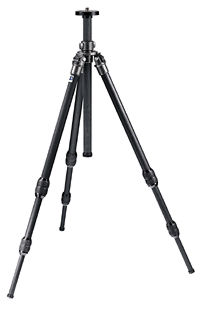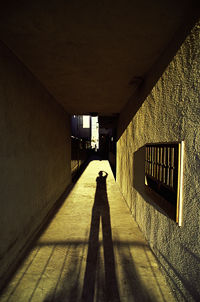Photographic Super Course: The Art of Seeing Page 3
| Composition One great thing about composition is that you can do it with any camera. A simple point-and-shoot might not allow you to control depth of field or motion blur, or even precise focus point and exposure, but you can create pleasing compositions with any camera. There's a bit more to composition that just deciding where in the frame to put your subject, but let's start with that. Where should you put the subject? Well, that's pretty much up to you. Put it where it works best. How do you determine that? Move the camera and see how the subject looks centered, toward the upper left, upper right, lower left, lower right, top center, bottom center—not a lot of effort is required to do this. Symmetrical subjects generally work well centered in the frame. For asymmetrical subjects, and multi-subject compositions, there's a basic "rule" you can use as a starting point. The Rule of Thirds tells you to divide the image frame into thirds with two vertical lines, and into thirds again with two horizontal lines. Then, position your subject at one of the four intersections created by those lines (see diagram A). Which intersection should you use? The one that looks best. If the subject is sideways to the camera, it's generally best if it faces into the image rather than out of it. And if the subject is moving, it should be moving into the picture, not out of it—leave some space for it to "move into" in the frame. If you position your main subject to one side of the frame, the composition might seem unbalanced unless you put a secondary subject somewhere on the opposite side to balance it. If the main subject is at the lower left, try to position a secondary subject toward the upper right. (Of course, except in controlled studio situations, you aren't really "putting" subjects anywhere—you're moving the camera so that the subjects that are there fall into the desired positions in the frame.) The background should be more than "all that stuff behind the subject." Everything back there will appear in your photo, either to the photo's advantage or not. Once you determine where the subject works best, consider its relationship with what's behind it. Moving the camera left or right or up or down could improve the picture, or hide a distracting element. If you can't "compose" a distracting element out of the picture, shoot with the lens wide open to minimize depth of field and thus throw the background completely out of focus so it's not so distracting. If you're shooting a portrait, it's generally easy to move the subject to a position with a nondistracting background. If the lighting just isn't right anywhere but at that one spot, crop tightly to eliminate the background elements. Positioning light objects against dark backgrounds, and dark subjects against light backgrounds, will make them stand out. Simplicity generally works. Busy compositions can give the viewer lots to explore, but few viewers will bother unless something really "grabs" them at first glance. That's something to keep in mind when entering photo contests. If the preliminary judges have to sort through lots of images, they'll likely pass over those that don't have immediate impact. |
- Log in or register to post comments
























































